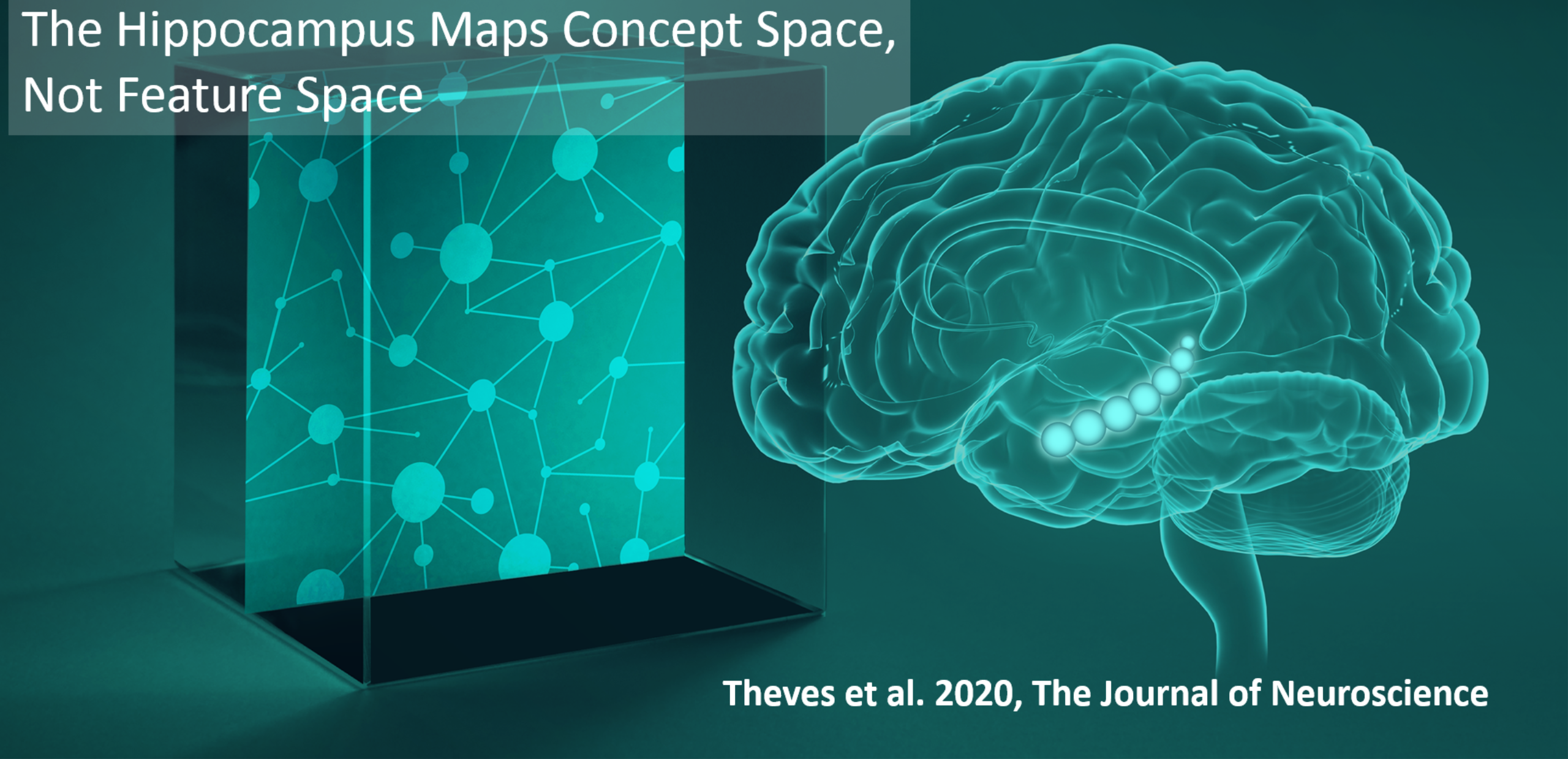How are neural representations of conceptual knowledge organized, such that humans are able to infer never experienced relations or categorize new exemplars?
Map-like representations – as supported by the hippocampus to encode physical space during navigation – have been considered a suitable format. For instance, one might infer whether an unknown animal can fly based on its proximity to familiar animals in a space defined along the feature dimensions ‘body weight’ and ‘wing size’. However, a given animal exhibits many more features than those relevant to its ability to fly. Thus, in order to use a map-like representation to transfer meaning (e.g. able to fly?) to novel information, the map would have to be dynamically refined to the feature dimensions that are currently relevant to the concept.
In our new study we followed up on our 2019 Current Biology paper (Theves et al., 2019) and now show such a distinction between conceptually relevant and overall features for the mapping function of the hippocampus.
Read more about this in the original article:


